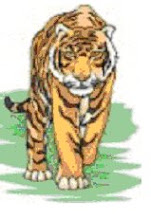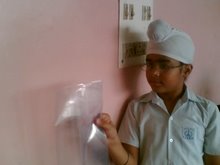
Thursday, 28 May 2009
ECO-DRIVING

Being a good driver is no more the sole criterion for getting a driving license… at least not in Britain. One has to show that he or she can be environment-friendly too by simply using fuel effectively. The British government has declared that from now fuel efficiency of teh vehicle would be made part of the driving test to help reduce polluting emissions, and to save money on energy bills.
Agropedia

Indian scientists have created an ‘agricultural Wikipedia’ to act as an online repository of agricultural information in the country. It would disseminate crop and region-specific information to researchers, students, farmers and agricultural extension workers, who share the knowledge with farmers. The site also has blogs and other platforms. The website currently contains information on nine crops — rice, wheat, chickpea, pigeon pea, vegetable pea, lychee, sugarcane, groundnut and sorghum. More topics will be added soon, after being validated through review and analysis by invited agricultural researchers. “It is hoped that even where farmers have no access to the Internet, the Agropedia information can be used as a basis for radio plays, for example,” says V. Balaji, head of knowledge management and sharing with the International Crop Research Institute for the Semi-Arid Tropics (ICRISAT), a partner in the project.
Ghg satellite

Japan has launched the world’s first greenhouse gas monitoring satellite into space. It is called Ibuki, which means ‘breath’. It will circle the planet every 100 minutes, gathering data to be shared with space and scientific organisations. It has three major mission objectives – to monitor the density of greenhouse gases precisely and frequently; to study the absorption and emission levels of greenhouse gases per continent or large country over a certain period of time; to establish advanced technologies essential for precise greenhouse gas observations. “The satellite is expected to play an important role in monitoring global environmental changes and look out for any small warning signs that could affect our future,” says a statement released by Japan Aerospace Exploration Agency (JAXA).
Medicines Made Of Cow Dung

Cow has been a part and parcel of our life since the time immemorial. In Gurukul Cow Shed, cows of high yielding breed are reared and their urine and dung are used for the preparation of so many medicines. All kinds of stomach related disorders are cured through the excreta of cow. Here soaps are also made by using cow urine which are very beneficial in skin related infections
cow-dung is also used to wax the floors in making Kolam ----a form of sandpainting of South India.

Kolam is a form of sandpainting that is drawn using rice powder by female members of the family in front of their home. It is widely practised by Hindus in South India. A Kolam is a sort of painted prayer — a line drawing composed of curved loops, drawn around a grid pattern of dots.
Kolams are thought to bestow prosperity to homes. Every morning in southern India, millions of women draw kolams on the ground with white rice powder. Through the day, the drawings get walked on, rained out, or blown around in the wind; new ones are made the next day. Every morning before sunrise, the floor is cleaned with water, the universal purifier, and the muddy floor is swept well for an even surface. The kolams are generally drawn while the surface is still damp so that it is held better. Occasionally, cow-dung is also used to wax the floors. Cow dung has antiseptic properties and hence provides a literal threshold of protection for the home. It also provides contrast with the white powder.
Decoration was not the sole purpose of a Kolam. In olden days, kolams used to be drawn in coarse rice flour, so that the ants don't have to work so hard for a meal. The rice powder is said to invite birds and other small critters to eat it, thus inviting other beings into one's home and everyday life: a daily tribute to harmonious co-existence. It is a sign of invitation to welcome all into the home, not the least of whom is Goddess Lakshmi, the Goddess of prosperity. The patterns range between geometric and mathematical line drawings around a matrix of dots to free form art work and closed shapes. Folklore has evolved to mandate that the lines must be completed so as to symbolically prevent evil spirits from entering the inside of the shapes, and thus are they prevented from entering the inside of the home.
3x3 dot all and only symmetry 9 Goddesses Swastika Kolam with a single cycle by Nagata S, each of which is corresponded to one of the nine Davi of the Hindu or the nine Muses in GreekIt used to be a matter of pride to be able to draw large complicated patterns without lifting the hand off the floor standing up in between. The month of Margazhi was eagerly awaited by young women, who would then showcase their skills by covering the entire width of the road with one big kolam.
The ritual kolam patterns created for occasions such as weddings can stretch all the way down streets. Patterns are often passed on generation to generation, from mother to daughter.
(from wikipedia)
COWDUNG CAKES
Tuesday, 26 May 2009
Improvement of methanogenesis from cow dung and poultry litter waste digesters by addition of iron
Improvement of methanogenesis from cow dung and poultry litter waste digesters by addition of iron
Journal World Journal of Microbiology and Biotechnology
Publisher Springer Netherlands
When 50mM FeSO4 was added to cow dung and poultry litter waste which had been processed in daily-fed batch digesters, digesters subsequently unfed showed a faster conversion of substrate and overloaded digesters stabilized within 48 h. Early stabilization of digesters was achieved by adding 20 or 50mM FeSO4 though the latter concentration was faster. When 20mM FeSO4 was added to the daily-fed cow dung and poultry litter waste digesters, it increased methanogenesis by 40% and 42%, respectively, and increased the turnover rate of total solids, volatile solids and volatile fatty acids and the number of methanogens.
AUTHORS:-P. Preeti Rao and G. Seenayya
The authors are with the Department of Microbiology, Osmania University, Hyderabad-500007, India
Journal World Journal of Microbiology and Biotechnology
Publisher Springer Netherlands
When 50mM FeSO4 was added to cow dung and poultry litter waste which had been processed in daily-fed batch digesters, digesters subsequently unfed showed a faster conversion of substrate and overloaded digesters stabilized within 48 h. Early stabilization of digesters was achieved by adding 20 or 50mM FeSO4 though the latter concentration was faster. When 20mM FeSO4 was added to the daily-fed cow dung and poultry litter waste digesters, it increased methanogenesis by 40% and 42%, respectively, and increased the turnover rate of total solids, volatile solids and volatile fatty acids and the number of methanogens.
AUTHORS:-P. Preeti Rao and G. Seenayya
The authors are with the Department of Microbiology, Osmania University, Hyderabad-500007, India
Increased production of biogas from cowdung by adding other agricultural waste materials
Increased production of biogas from cowdung by adding other agricultural waste materials
R. D. Laura, M. A. Idnani
Division of Soil Science and Agricultural Chemistry, Indian Agricultural Research Institute, New Delhi, India
Abstract
It was found that the addition of nitrogenous materials, such as casein, urea or urine, increased the extem of decomposition of cowdung, resulting in higher gas production. The effect appears to be due to the maintenance of pH > 7 during fermentation. With the addition of urea or CaCO3, materials such as. dry leaves and cane sugar have yielded high proportions of methane in the gas mixtures and these additions also increased the rate of gas production by promoting anaerobic conditions in the medium. Addition of cellulose also increased the rate but the gas mixture obtained had a lower methane content.
--------------------------------------------------------------------------------
R. D. Laura, M. A. Idnani
Division of Soil Science and Agricultural Chemistry, Indian Agricultural Research Institute, New Delhi, India
Abstract
It was found that the addition of nitrogenous materials, such as casein, urea or urine, increased the extem of decomposition of cowdung, resulting in higher gas production. The effect appears to be due to the maintenance of pH > 7 during fermentation. With the addition of urea or CaCO3, materials such as. dry leaves and cane sugar have yielded high proportions of methane in the gas mixtures and these additions also increased the rate of gas production by promoting anaerobic conditions in the medium. Addition of cellulose also increased the rate but the gas mixture obtained had a lower methane content.
--------------------------------------------------------------------------------
GREEN BRICKS
We’ve covered the value of worm poop, and now it’s time for the merits of cow dung to come to the fore. EcoFaeBrick turns cattle waste into bricks that are greener, stronger and 20% lighter than regular clay bricks.
The Indonesian organization was set up earlier this year to tackle the problem of excessive waste in farming areas. From this, the ecological and economical solution of the Cow Dung Brick was born. There's no visible difference between a traditional brick and the dung brick—and before you ask, there's no smell either. Instead of using wood fire the dung bricks are fired using biogas, helping to further reduce carbon emissions. The new product also lets land be retained for farming, rather than being excavated for clay for conventional bricks, or becoming a health risk due to ‘too much dung’.
A green product that boosts the wealth of rural Indonesians, it's not hard to see why EcoFaeBrick came first in the 2009 Global Social Venture competition. The company has identified 22 areas around Indonesia that they want to expand the project to, plus 22 more in other parts of the world. One to support, or otherwise get involved with!
The Indonesian organization was set up earlier this year to tackle the problem of excessive waste in farming areas. From this, the ecological and economical solution of the Cow Dung Brick was born. There's no visible difference between a traditional brick and the dung brick—and before you ask, there's no smell either. Instead of using wood fire the dung bricks are fired using biogas, helping to further reduce carbon emissions. The new product also lets land be retained for farming, rather than being excavated for clay for conventional bricks, or becoming a health risk due to ‘too much dung’.
A green product that boosts the wealth of rural Indonesians, it's not hard to see why EcoFaeBrick came first in the 2009 Global Social Venture competition. The company has identified 22 areas around Indonesia that they want to expand the project to, plus 22 more in other parts of the world. One to support, or otherwise get involved with!
Subscribe to:
Comments (Atom)




















































